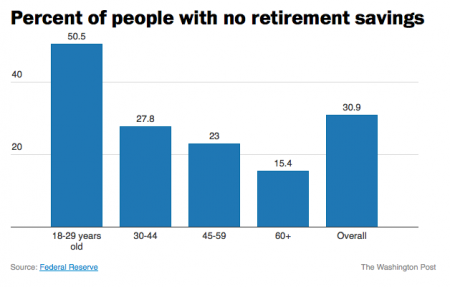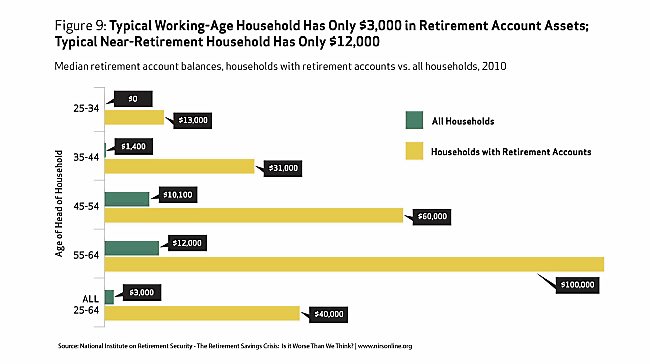"and all that could not sink or swim was just left there to float"
Ship of Fools
Grateful Dead
Susan and I graduated from college in 1986 and started our entry level jobs. My engineering job paid $30,000 and her CPA firm job paid $25,000. We never had to live at home and were able to afford our own apartments. In my case, paying cash for a modest used car and paying off some student loan debt was easily accomplished. We were still able to go out on the town in Philadelphia with friends and still still save money in
IRAs and 401(k)s. When we got married at the age of 28, we had saved enough to pay for our own wedding and honeymoon. We both were taught the value of investing by our parents and had mutual fund accounts at Vanguard long before we met. We knew retirement by age 50 was an achievable goal. Anyone who entered the job market from the mid 1970s through the mid 1980’s, which would be the late Baby Boomers and early Generation Xers, had job opportunities and the benefit of starting their investing with low stock market valuations.
P/E ratios of the market were single digits in the late 70s and early 80s, versus 20+ today. Dividend yields on stocks averaged 5% for the S&P 500, versus 1.9% today. The Dow bottomed out at 759 in 1980, while the S&P 500 bottomed at 98. A 20 year secular bull market was about to get under way. Baby Boomers and Generation Xers had the opportunity of a lifetime. Even after six years of the bull, when we graduated from college the Dow stood at 1,786 and the S&P 500 stood at 521. We had just begun to ramp up our investing when the 1987 crash wiped out 20% in one day. I remember my divisional GM in hysteria that day as he proclaimed it was the end of the economy as we know it. He didn't have as much time as we had. It meant very little to us. We didn’t have much to lose, and we had time on our side, so we just kept investing.
The 20 year bull market took the Dow from 759 to11,722 by January 2000. The S&P 500 rose from 98 to 1,552 by March 2000. You also averaged about a 3% dividend yield per year over the entire 20 years. Your average annual return, including reinvested dividends, exceeded 17%. Anyone who even saved a minimal amount of money on a monthly basis, would have built a substantial nest egg for retirement. If you had invested in 10 Year Treasuries, your annual return would have exceeded 11% over the 20 years. Even an ultra-conservative investor who only put their money into 5 year CDs would have averaged better than 7% per year over the 20 years.
Even with the two stock market collapses since 2000, your average annual return in the stock market since 1980 still exceeds 11%. That’s 34 years with an average annual total return of better than 11%. Every person who had a job ovr this time frame should have accumulated a decent level of retirement savings. That is why the chart below is so shocking. Over 15% of all people 60 and older and 23% of people 45 to 59 years old ZERO retirement savings. This means 25 million Boomers and Xers are stuck living off a Social Security pittance or on a pension system that is primed to collapse under its own weight. It seems they let 30 years of one of the greatest investing periods in history get behind them. They floated through a period unlikely to be repeated in our lifetime and are now waiting to sink.


The far worse data points are the $12,000 median retirement balance of aged 55 to 64 households and the $10,100 median retirement balance of aged 45 to 54 households. These people are on the edge of retirement and have less than one year’s expenses saved. There is no legitimate excuse for this pitiful display of planning. These people had decades to save, strong financial market returns, and, if they worked for even a small to medium size organization, matching contributions to their retirement accounts. They didn’t need a huge salary. They didn’t need to save 20% of their salary. They didn’t have to be an investing genius. A savings allocation of just 3% to 5% would have grown into a decent sized nest egg after a few decades of compounding.
We know from the data in the chart, it didn’t happen. The concept of delayed gratification is unknown to the millions of nearly broke Boomers and Xers, shuffling towards an old age of poverty, misery and regret. A 64 year old has a life expectancy of about 20 years. They’ll have to budget “very” frugally to make that $12,000 last. The question is how did it happen. I don’t buy the load of crap that you can’t judge people as groups. I judge people by their actions, not their words. I know you can’t lump every Boomer and Xer into one box. Individuals in every generation have bucked the trend, lived within their means, saved for the future, and accumulated significant nest eggs for their retirement. But the aggregate numbers don’t lie. The majority of those over the age of 45 have squandered their chance at a relatively comfortable retirement. These are the people who most vociferously insist the government do something about their self created plight. It’s their right to free healthcare, free food, subsidized housing, free utilities, higher minimum wages, and a comfortable government subsidized retirement. They are wrong. They had a right to life, liberty and the pursuit of happiness. It was up to them to educate themselves, get a job, work hard, and accumulate savings.
The generations of "live for today, don’t worry about tomorrow" Americans over the age of 45 have no one to blame but themselves. They bought those 4,500 square foot McMansions with negative amortization, 0% down mortgages. They had to keep up with the Jones-es by putting in granite counter-tops, stainless steel appliances, home theaters, Olympic sized swimming pools, and enormous decks. They have HDTVs in every room in their house and must have every premium cable channel, along with the NFL package. They upgrade their phones every time Apple rolls out a new and improved version of iCrap. They pay landscapers to manicure their properties. They lease new BMWs every three years. They have taken exotic vacations on an annual basis. They haven’t packed a lunch for themselves since they were 16 years old. Eating out for lunch and dinner has been a staple of their existence for decades. That morning Starbucks coffee is a given. A new wardrobe of name brand stylish clothes for every season is a requirement because your neighbors and co-workers are constantly judging you. Nothing proves you’re a success like a Rolex watch, Canali suit, Versace boots, or Gucci handbag. If these things had been purchased with cash after savings, then good on them. Unfortunately, the have it now generations got it then and have virtually nothing now because they acquired all of these things with debt.
Real cumulative household income is up 10% since 1980. Consumer debt outstanding has risen from $350 billion in 1980 to $3.267 trillion today. That is a 933% increase. We’ve had decades of faux prosperity aided and abetted by Wall Street shysters, corrupt politicians, mega-corporation mass merchandisers, and Madison Avenue maggots trained in the methods of Edward Bernays to convince willfully ignorant consumers to consume. And consume we did. Saving, not so much. You can blame the oligarchs, bankers, retailers, and politicians for the fact you didn’t save, but it rings hollow. No matter how much propaganda is spewed by the ruling class, we are still individuals with free will. The older generations had choices. Saving money requires only one thing – spending less than you make. Most Boomers and Xers chose to spend more than they made and financed the difference. When the average credit card balance is five times greater than the median retirement account balance, you’ve got a problem. The facts about our consumer empire of debt are unequivocal as can be seen in these statistics:
- Average credit card debt: $15,593
- Average mortgage debt: $153,184
- Average student loan debt: $32,511
- $11.62 trillion in total debt
- $880.3 billion in credit card debt
- $8.05 trillion in mortgages
- $1.12 trillion in student loans
I’d love to offer some sage advice on how to fix this problem, but it’s too late. Too many people missed the investment boom of our lifetime. By not doing anything extraordinary, Susan and I were able to retire by age 47. No one is going to come to the rescue of people who never saved for their future. The Federal government has already made $200 trillion of entitlement promises it can’t keep. State governments have made tens of trillions in pension promises they can’t keep. They can’t tax young people who don’t have jobs. Older generations who think the government is going to rescue them from their foolish shortsighted choices are badly mistaken. Their benefits are likely to be reduced because the unsustainable just can not be sustained. The 45 to 64 year old cohort who chose not to save can paddle and kick to try to learn how to swim, but it’s too late for this Ship of Fools. They are sinking. Absent a stick save in the form of a rich relative, they are most likely destined for lives of quiet desperation. There is nothing more to say.